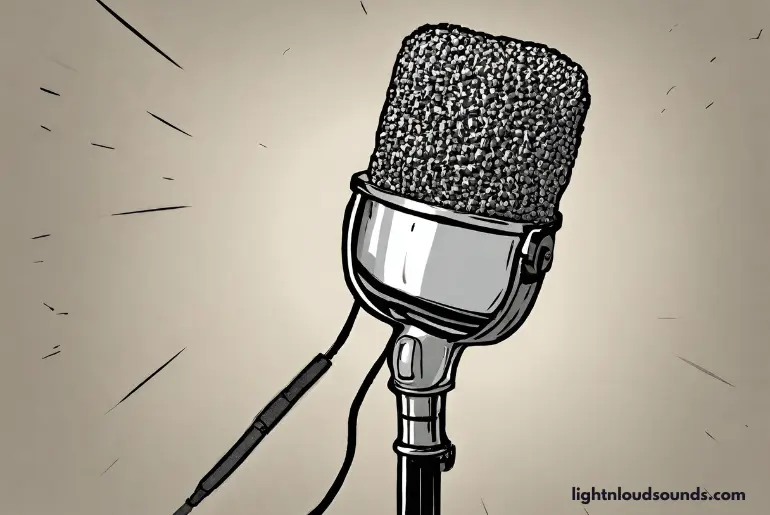Achieving optimal microphone sound can make a lot of difference whether you’re a budding podcaster, an aspiring musician, or someone who simply needs clearer audio. It’s a common misconception that louder automatically equals better when it comes to audio output. The goal is not just to crank up the volume but to elevate the sound quality to ensure your voice is heard clearly and authentically.
In this post, I’ll walk you through some effective techniques to amplify your microphone’s sound without sacrificing clarity or quality.
Steps to Amplify Your Microphone’s Sound
1. Check your microphone’s settings
Before diving into more complex methods, the first step is to make sure that your microphone is properly configured. Go to your computer’s sound settings and navigate to the microphone tab. Here, you can adjust the input level of your microphone. Make sure it is not set too low; otherwise, you’ll struggle with low volume.
Turning the volume up can make a significant difference and is often enough to solve the problem. If you’re using an external microphone, ensure it is properly connected and set as the default input device.
2. Adjust the microphone boost
Microphone boost is an option available in most sound settings interfaces, including Windows and macOS. It increases the microphone’s signal strength, thereby making your audio louder. To access this setting, go to the microphone properties in your computer’s sound settings and look for an option that says ‘Microphone Boost’ or something similar.
Then adjust the boost level. Be cautious, however; boosting too much can lead to distorted audio. Always test the output after making changes to ensure the audio quality meets your requirements.
3. Use a microphone preamplifier
If the above steps are insufficient or you’re using a low-gain microphone that needs more power, consider using a microphone preamplifier. This external device amplifies the signal from your microphone before it reaches your computer or recording device. It is especially useful for dynamic or ribbon microphones that require additional gain.
To use a preamplifier, plug your microphone into the preamp and then connect the preamp to your computer or recording device. You’ll be able to adjust the gain and potentially other settings like high-pass filters or equalization to achieve the exact level of amplification you require.
4. Use a microphone gain booster

A microphone gain booster is a software-based solution designed to amplify your microphone’s audio signals. This is particularly useful if you’re using a basic built-in microphone or an external microphone without built-in gain control. The software adjusts the sensitivity levels of the microphone, making your voice more pronounced in recordings or during live sessions.
Various third-party software options exist that you can install on your computer, and some audio interfaces come with built-in software that can accomplish this task. Always remember to adjust the settings cautiously, as setting the gain too high can lead to distortion.
5. Move closer to the microphone
The simplest way to amplify your microphone’s sound without any extra equipment or software is to move closer to the microphone. Microphones pick up sound in patterns, usually in a radius around the mic.
The closer you are to the center of this radius, the more direct sound the microphone will capture, making your voice louder and clearer. However, proximity can be a double-edged sword: getting too close might result in pops or an overly bass-heavy sound, known as the proximity effect. Therefore, finding the optimal distance for clarity and loudness is key.
6. Use a noise gate
A noise gate is a hardware or software tool that lets important sounds through while reducing or cutting off background noise when you’re not speaking. Noise gates are highly useful if you’re in an environment where other noises can be a distraction, such as fans, traffic, or general room noise.
This will make your voice stand out more, amplifying it more than the background noise. You set a threshold level; any sound that doesn’t meet this level is cut out or significantly reduced, allowing your voice to be the main audio focus.
7. Use a microphone gain booster
A microphone gain booster is a software-based solution designed to amplify your microphone’s audio signals. This is particularly useful if you’re using a basic built-in microphone or an external microphone without built-in gain control. The software adjusts the sensitivity levels of the microphone, making your voice more pronounced in recordings or during live sessions.
8. Use a noise gate
A noise gate is a hardware or software tool that lets important sounds through while reducing or cutting off background noise when you’re not speaking. Noise gates are highly useful if you’re in an environment where other noises can be a distraction, such as fans, traffic, or general room noise.
This will make your voice stand out more, amplifying it more than the background noise. You set a threshold level; any sound that doesn’t meet this level is cut out or significantly reduced, allowing your voice to be the main audio focus.
Conclusion
Mastering the art of microphone amplification can be both a satisfying and empowering experience. By understanding the mechanics of gain, soundproofing, and equalization, you can take your audio projects to a whole new level.
Whether your interest is professional or personal, a well-amplified microphone can help you communicate more effectively, capture better sound quality, and leave a lasting impression on your audience. Implementing these techniques doesn’t require you to be an audio engineer.

